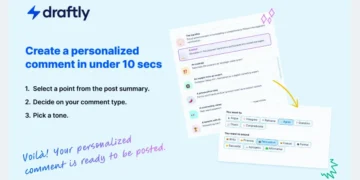Abu Dhabi takes a firm step into artificial intelligence with the unveiling of Falcon 180B, the largest open source language model to date. This computational giant sets new standards in the scientific and commercial community.
Origins of Falcon 180B and its scaling in benchmarks
The Technology Innovation Institute (TII) in Abu Dhabi is not new to this field. Back in June, the institution launched three Falcon variants: 1B, 7B and 40B. Falcon 180B, with 180 billion parameters, has been trained on a gigantic data set of 3.5 trillion tokens, drawing on up to 4096 GPUs.
Falcon 180B excels in tasks like reasoning, coding, proficiency, and knowledge tests, even outperforming competitors like Meta's LLaMA 2. pic.twitter.com/5MBYNauREC
— Technology Innovation Institute (@TIIuae) September 7, 2023
Technical comparison: Falcon 180B vs Llama 2 vs GPT-3.5
Falcon 180B, Llama 2 and GPT-3.5 are all significant examples of the advancement in large-scale language models, but there are key differences that separate them in terms of architecture, efficiency and performance.
Size and Parameters
Falcon 180B tops the list with 180 billion parameters, while Llama 2 has approximately 70 billion and GPT-3.5 has slightly fewer. These parameters are fundamental to understanding the complexity and scope of each model, with Falcon 180B setting a new record in this regard.
Architecture and Efficiency
One of the most distinctive features of Falcon 180B is its use of multiple query attention (MQA). This approach improves the model’s efficiency in tasks involving more complex conversations and gives a quantum leap in performance. GPT-3.5, while efficient, does not incorporate this technology, and Llama 2 has a different architecture that is not as optimized for these types of tasks.
Computational Power
In terms of computational power, Falcon 180B uses four times more computational power than Llama 2. This increase in resource utilization suggests that Falcon 180B can handle more intensive and complex tasks, although it also raises questions about energy efficiency and operating cost.
Benchmark Performance
According to data available at huggingface.co, Falcon 180B has outperformed Llama 2 and GPT-3.5 in several benchmarks in terms of MMLU, a metric that measures model usability across multiple tasks. However, it has not yet managed to outperform GPT-4, the most advanced model in this regard.
Flexibility and Applicability
Although Falcon 180B and Llama 2 are open source models, Falcon 180B’s license has certain limitations in terms of commercial use, which could affect its adaptability in different scenarios. GPT-3.5, on the other hand, is not an open source model, which could be a limiting factor in terms of accessibility and adaptability.
Competitive Landscape in Open Source Language Models
While OpenAI has been a key player in the world of open source language models, Falcon 180B could alter this dynamic. With the arrival of Google’s Gemini, the competitive landscape is more open than ever.
The launch of Falcon 180B gives us pause to reflect on the rapid development in the field of artificial intelligence. Not only are we witnessing advances in size and processing power, but also in the quality and diversity of practical applications that these models can address. The real challenge, perhaps, lies in balancing scalability with ethics and accessibility.
🌟 Introducing Falcon 180B: The World's Most Powerful Open LLM! 🚀
At #TII, we are continuing to push the boundaries of generative AI with our open access Falcon 180B AI model which has already soared to the top of the Hugging Face Leaderboard. pic.twitter.com/lXgIPqudPR
— Technology Innovation Institute (@TIIuae) September 6, 2023
More info: huggingface.co
Conclusion
The unveiling of Falcon 180B marks a new milestone in the evolution of open source language models. With 180 billion parameters trained on a massive 3.5 trillion token dataset, the model achieves state-of-the-art performance on complex conversational AI tasks.
Powered by the innovative multiple query attention architecture, Falcon 180B points to the future scalability of natural language systems. While benchmarks show Falcon 180B surpassing predecessors like Llama 2 and GPT-3.5, competition remains fierce as models like Google’s Gemini arise.
Ultimately, Falcon 180B’s flexibility and advanced capabilities position it as a new star among open source foundations pursuing artificial general intelligence. However, optimizing for ethics and accessibility should remain priorities amidst the rapid pace of progress. Abu Dhabi’s contribution reaffirms the emirate’s ascendance as a hub of AI innovation.
FAQs
How many parameters does Falcon 180B have?
Falcon 180B has 180 billion parameters, making it the largest open source language model to date.
What architecture does Falcon 180B use?
It uses a multiple query attention (MQA) architecture which improves efficiency for complex conversational tasks.
How does Falcon 180B compare to other major language models?
It surpasses predecessors like GPT-3.5 and Llama 2 in benchmarks, but has not yet exceeded the performance of GPT-4.
Who developed the Falcon 180B model?
It was developed by the Technology Innovation Institute in Abu Dhabi.
What are some key strengths of Falcon 180B?
Its massive scale, innovative MQA architecture, state-of-the-art performance on benchmarks, and open source accessibility.
Follow us on our social networks and keep up to date with everything that happens in the Metaverse!
Twitter Linkedin Facebook Telegram Instagram Google News Amazon Store











































